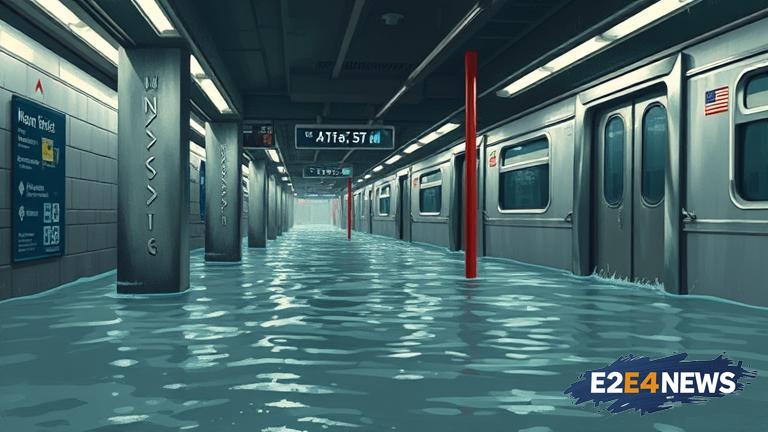The recent flooding of New York City’s subway system has raised concerns about the city’s infrastructure and its ability to withstand the impacts of climate change. The flooding, which occurred during a heavy rainfall event, was not an isolated incident, but rather a symptom of a larger issue – the increasing frequency and severity of urban floods in a warming world. As the planet continues to warm, cities around the world are experiencing more frequent and intense rainfall events, which are overwhelming their drainage systems and causing flooding. This is not just a problem for New York City, but for urban areas everywhere. In fact, a recent study found that over 800 cities worldwide are at risk of flooding due to climate change. The study also found that the frequency and severity of flooding events are expected to increase by as much as 50% by 2050. The impacts of urban flooding are far-reaching, from disrupting transportation systems and damaging infrastructure, to threatening public health and safety. In addition to the immediate effects, urban flooding can also have long-term consequences, such as increased risk of waterborne diseases and decreased property values. To mitigate these effects, cities will need to invest in infrastructure upgrades, such as green roofs, permeable pavements, and improved drainage systems. They will also need to implement policies and strategies to reduce the risk of flooding, such as zoning regulations and floodplain management. Furthermore, cities will need to work together to share knowledge and best practices for addressing urban flooding, and to advocate for national and international policies that support their efforts. The good news is that there are many examples of cities that are taking proactive steps to address urban flooding, from Rotterdam’s innovative water management system to Singapore’s comprehensive flood protection plan. However, more needs to be done to support these efforts and to ensure that all cities have the resources and expertise they need to adapt to the challenges of climate change. Ultimately, the flooding of New York City’s subway system is a wake-up call for cities around the world to take action on climate change and to prioritize the development of resilient and sustainable infrastructure. By working together, we can reduce the risks associated with urban flooding and create a more livable and sustainable future for all. The need for action is urgent, and the consequences of inaction will be severe. It is time for cities to take the lead in addressing the challenges of climate change and to work towards a more resilient and sustainable future. The future of our cities depends on it.
